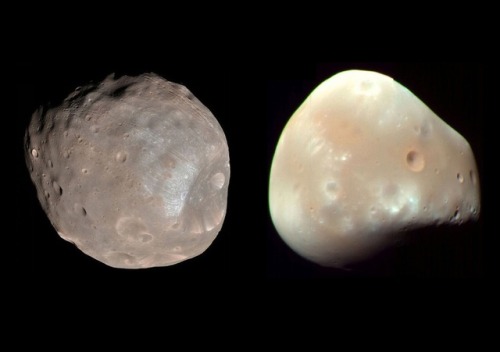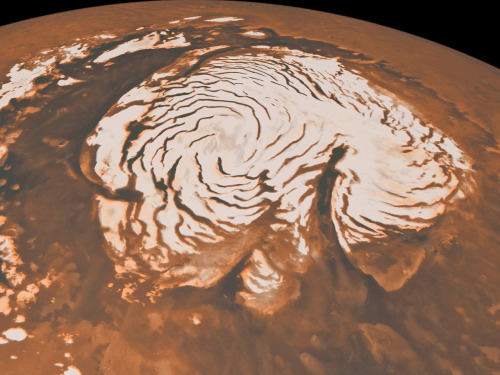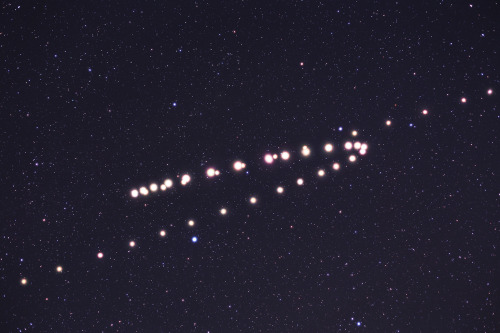Four Open Clusters (M103, Owl Cluster, And Two Caldwells) Visit Http://spaceviewsandbeyond.blogspot.com/2017/11/four-open-clusters-m103-owl-cluster-and.html

Four open clusters (M103, Owl Cluster, and two Caldwells) Visit http://spaceviewsandbeyond.blogspot.com/2017/11/four-open-clusters-m103-owl-cluster-and.html for more space pics
More Posts from Duxgregis and Others
I really think I've exhausted the list of WWII documentaries, fiction films, docu-dramas, government films, and television series. And WWII alternate universe stories too. Damn... #NerdConfessions
Any guy: I love history, I find it really interesting. Especially-
Me cutting him off, rubbing my temples: especially World War II. Yeah



When you text San Francisco Museum of Modern Art how you’re feeling, it responds with a work of art that captures your mood.
GUYS! We live in an amazing world! I just texted the San Francisco Museum of Modern Art, “send me food,” and they sent me a picture of vegetables from their collection. My boyfriend texted them the cactus emoji and they sent back a picture of a cactus. This is blowing my mind!

Mars is the third solar body inhabited by humans. (cir. 2029)
Ten interesting facts about Mars
The ancient Sumerians believed that Mars was Nergal, the god of war and plague. During Sumerian times, Nergal was a minor deity of little significance, but, during later times, his main cult center was the city of Nineveh. In Mesopotamian texts, Mars is referred to as the “star of judgement of the fate of the dead”. The existence of Mars as a wandering object in the night sky was recorded by the ancient Egyptian astronomers and, by 1534 BCE, they were familiar with the retrograde motion of the planet. By the period of the Neo-Babylonian Empire, the Babylonian astronomers were making regular records of the positions of the planets and systematic observations of their behavior. For Mars, they knew that the planet made 37 synodic periods, or 42 circuits of the zodiac, every 79 years. They invented arithmetic methods for making minor corrections to the predicted positions of the planets.

Mars is the fourth planet from the Sun and the second-smallest planet in the Solar System after Mercury.

The bright rust color Mars is known for is due to iron-rich minerals in its regolith — the loose dust and rock covering its surface. The soil of Earth is a kind of regolith, albeit one loaded with organic content. According to NASA, the iron minerals oxidize, or rust, causing the soil to look red.

The rotational period and seasonal cycles of Mars are likewise similar to those of Earth, as is the tilt that produces the seasons. Mars is the site of Olympus Mons, the largest volcano and second-highest known mountain in the Solar System, and of Valles Marineris, one of the largest canyons in the Solar System.

Mars has two moons, Phobos and Deimos, which are small and irregularly shaped. These may be captured asteroids, similar to 5261 Eureka, a Mars trojan.

There are ongoing investigations assessing the past habitability potential of Mars, as well as the possibility of extant life. Future astrobiology missions are planned, including the Mars 2020 and ExoMars rovers. Liquid water cannot exist on the surface of Mars due to low atmospheric pressure, which is less than 1% of the Earth’s, except at the lowest elevations for short periods. The two polar ice caps appear to be made largely of water. The volume of water ice in the south polar ice cap, if melted, would be sufficient to cover the entire planetary surface to a depth of 11 meters (36 ft). In November 2016, NASA reported finding a large amount of underground ice in the Utopia Planitia region of Mars. The volume of water detected has been estimated to be equivalent to the volume of water in Lake Superior.

Mars can easily be seen from Earth with the naked eye, as can its reddish coloring. Its apparent magnitude reaches −2.91, which is surpassed only by Jupiter, Venus, the Moon, and the Sun. Optical ground-based telescopes are typically limited to resolving features about 300 kilometers (190 mi) across when Earth and Mars are closest because of Earth’s atmosphere.

Like Earth, Mars has differentiated into a dense metallic core overlaid by less dense materials. Current models of its interior imply a core with a radius of about 1,794 ± 65 kilometers (1,115 ± 40 mi), consisting primarily of iron and nickel with about 16–17% sulfur. This iron(II) sulfide core is thought to be twice as rich in lighter elements as Earth’s. The core is surrounded by a silicate mantle that formed many of the tectonic and volcanic features on the planet, but it appears to be dormant. Besides silicon and oxygen, the most abundant elements in the Martian crust are iron, magnesium, aluminum, calcium, and potassium. The average thickness of the planet’s crust is about 50 km (31 mi), with a maximum thickness of 125 km (78 mi). Earth’s crust averages 40 km (25 mi).

Mars lost its magnetosphere 4 billion years ago, possibly because of numerous asteroid strikes, so the solar wind interacts directly with the Martian ionosphere, lowering the atmospheric density by stripping away atoms from the outer layer. Both Mars Global Surveyor and Mars Expresshave detected ionised atmospheric particles trailing off into space behind Mars, and this atmospheric loss is being studied by the MAVEN orbiter. Compared to Earth, the atmosphere of Mars is quite rarefied.

Mars’s average distance from the Sun is roughly 230 million kilometres (143,000,000 mi), and its orbital period is 687 (Earth) days. The solar day (or sol) on Mars is only slightly longer than an Earth day: 24 hours, 39 minutes, and 35.244 seconds. A Martian year is equal to 1.8809 Earth years, or 1 year, 320 days, and 18.2 hours

Mars is scarred by a number of impact craters: a total of 43,000 craters with a diameter of 5 km (3.1 mi) or greater have been found. The largest confirmed of these is the Hellas impact basin, a light albedo feature clearly visible from Earth. Due to the smaller mass of Mars, the probability of an object colliding with the planet is about half that of Earth. Mars is located closer to the asteroid belt, so it has an increased chance of being struck by materials from that source. Mars is more likely to be struck by short-period comets, i.e., those that lie within the orbit of Jupiter. In spite of this, there are far fewer craters on Mars compared with the Moon, because the atmosphere of Mars provides protection against small meteors and surface modifying processes have erased some craters.
Martian craters can have a morphology that suggests the ground became wet after the meteor impacted.
Source 1
Source 2
images: NASA/JPL-Caltech/Univ. of Arizona , ESA, Tunç Tezel
astronomy facts










Delicate Temporary Tattoos That Look Like Real Watercolor Illustrations
London-based brand and temporary tattoo designers PAPERSELF prides itself in the creation of artistic temporary tattoos. Adorned with soft pastels and inspired by nature, the watercolor-like temporary tattoos are unique. They follow the new trend of artistic temporary tattoos, which mimic the delicacy of watercolor paintings. Find their entire collection in their Etsy shop.
View similar posts here!
Gifts for every budget
Personalized and custom jewelry
Jewelry shop
Gifts for her
Home gallery
Topic: Etsy, Illustration, Temporary Tattoos, Tattoos || by STAFF
Yeah. We get it. We've all seen Saving Private Ryan, and played Wolfenstein at some point in our lives.
Any guy: I love history, I find it really interesting. Especially-
Me cutting him off, rubbing my temples: especially World War II. Yeah
Who on Earth could ever turn this owl away?

Technovember Day 29. Some owls are born, others are forged by Hephaestus.

Always a better tomorrow
A Hitchhiker’s Ride to Space
This month, we are set to launch the latest weather satellite from the National Oceanic and Atmospheric Administration (NOAA). The Joint Polar Satellite System-1, or JPSS-1, satellite will provide essential data for timely and accurate weather forecasts and for tracking environmental events such as forest fires and droughts.

Image Credit: Ball Aerospace
JPSS-1 is the primary satellite launching, but four tiny satellites will also be hitchhiking a ride into Earth orbit. These shoebox-sized satellites (part of our CubeSat Launch Initiative) were developed in partnership with university students and used for education, research and development. Here are 4 reasons why MiRaTA, one of the hitchhikers, is particularly interesting…

Miniaturized Weather Satellite Technology
The Microwave Radiometer Technology Acceleration (MiRaTA) CubeSat is set to orbit the Earth to prove that a small satellite can advance the technology necessary to reduce the cost and size of future weather satellites. At less than 10 pounds, these nanosatellites are faster and more cost-effective to build and launch since they have been constructed by Principal Investigator Kerri Cahoy’s students at MIT Lincoln Laboratory (with lots of help). There’s even a chance it could be put into operation with forecasters.

The Antenna? It’s a Measuring Tape
That long skinny piece coming out of the bottom right side under MiRaTA’s solar panel? That’s a measuring tape. It’s doubling as a communications antenna. MiRaTA will measure temperature, water vapor and cloud ice in Earth’s atmosphere. These measurements are used to track major storms, including hurricanes, as well as everyday weather. If this test flight is successful, the new, smaller technology will likely be incorporated into future weather satellites – part of our national infrastructure.

Tiny Package Packing a Punch MiRaTA will also test a new technique using radio signals received from GPS satellites in a higher orbit. They will be used to measure the temperature of the same volume of atmosphere that the radiometer is viewing. The GPS satellite measurement can then be used for calibrating the radiometer. “In physics class, you learn that a pencil submerged in water looks like it’s broken in half because light bends differently in the water than in the air,” Principal Investigator Kerri Cahoy said. “Radio waves are like light in that they refract when they go through changing densities of air, and we can use the magnitude of the refraction to calculate the temperature of the surrounding atmosphere with near-perfect accuracy and use this to calibrate a radiometer.”

What’s Next?
In the best-case scenario, three weeks after launch MiRaTA will be fully operational, and within three months the team will have obtained enough data to study if this technology concept is working. The big goal for the mission—declaring the technology demonstration a success—would be confirmed a bit farther down the road, at least half a year away, following the data analysis. If MiRaTA’s technology validation is successful, Cahoy said she envisions an eventual constellation of these CubeSats orbiting the entire Earth, taking snapshots of the atmosphere and weather every 15 minutes—frequent enough to track storms, from blizzards to hurricanes, in real time.
Learn more about MiRaTA
Watch the launch!

The mission is scheduled to launch this month (no sooner than Nov. 14), with JPSS-1 atop a United Launch Alliance (ULA) Delta II rocket lifting off from Space Launch Complex 2 at Vandenberg Air Force Base in California. You’ll be able to watch on NASA TV or at nasa.gov/live.

Watch the launch live HERE on Nov. 14, liftoff is scheduled for Tuesday, 4:47 a.m.!
Make sure to follow us on Tumblr for your regular dose of space: http://nasa.tumblr.com.
-
 princessprettycakezxo liked this · 7 years ago
princessprettycakezxo liked this · 7 years ago -
 5billionyears reblogged this · 7 years ago
5billionyears reblogged this · 7 years ago -
 vikith21 reblogged this · 7 years ago
vikith21 reblogged this · 7 years ago -
 vikith21 liked this · 7 years ago
vikith21 liked this · 7 years ago -
 sunbathe liked this · 7 years ago
sunbathe liked this · 7 years ago -
 alfreto14 liked this · 7 years ago
alfreto14 liked this · 7 years ago -
 popo2525 liked this · 7 years ago
popo2525 liked this · 7 years ago -
 osiris777-blog1 liked this · 7 years ago
osiris777-blog1 liked this · 7 years ago -
 deeper2015a liked this · 7 years ago
deeper2015a liked this · 7 years ago -
 alymic-blog liked this · 7 years ago
alymic-blog liked this · 7 years ago -
 muugirl reblogged this · 7 years ago
muugirl reblogged this · 7 years ago -
 juanka14f-blog liked this · 7 years ago
juanka14f-blog liked this · 7 years ago -
 dalest99 liked this · 7 years ago
dalest99 liked this · 7 years ago -
 lord-von-doom liked this · 7 years ago
lord-von-doom liked this · 7 years ago -
 wanna-bel0ved reblogged this · 7 years ago
wanna-bel0ved reblogged this · 7 years ago -
 wanna-bel0ved liked this · 7 years ago
wanna-bel0ved liked this · 7 years ago -
 fuerzaguerrera11-blog liked this · 7 years ago
fuerzaguerrera11-blog liked this · 7 years ago -
 proto36-blog liked this · 7 years ago
proto36-blog liked this · 7 years ago -
 o0nuko0o liked this · 7 years ago
o0nuko0o liked this · 7 years ago -
 h-ersi-blog reblogged this · 7 years ago
h-ersi-blog reblogged this · 7 years ago -
 h-ersi-blog liked this · 7 years ago
h-ersi-blog liked this · 7 years ago -
 kankan2905-blog liked this · 7 years ago
kankan2905-blog liked this · 7 years ago -
 mayastefhany-blog liked this · 7 years ago
mayastefhany-blog liked this · 7 years ago -
 starsinacoffeecup-blog liked this · 7 years ago
starsinacoffeecup-blog liked this · 7 years ago -
 ger040 liked this · 7 years ago
ger040 liked this · 7 years ago -
 matasuilusion liked this · 7 years ago
matasuilusion liked this · 7 years ago -
 laryalves1000-blog liked this · 7 years ago
laryalves1000-blog liked this · 7 years ago -
 jbyers2501-blog liked this · 7 years ago
jbyers2501-blog liked this · 7 years ago -
 angelelise-blog1 liked this · 7 years ago
angelelise-blog1 liked this · 7 years ago -
 busserdinda reblogged this · 7 years ago
busserdinda reblogged this · 7 years ago -
 dindabusser liked this · 7 years ago
dindabusser liked this · 7 years ago -
 annnewland liked this · 7 years ago
annnewland liked this · 7 years ago -
 biancafeldens-blog liked this · 7 years ago
biancafeldens-blog liked this · 7 years ago -
 shanflly-blog liked this · 7 years ago
shanflly-blog liked this · 7 years ago -
 marcsello29 liked this · 7 years ago
marcsello29 liked this · 7 years ago -
 vale4c-blog liked this · 7 years ago
vale4c-blog liked this · 7 years ago -
 vulcan-lover liked this · 7 years ago
vulcan-lover liked this · 7 years ago -
 joaohortacaetano-blog liked this · 7 years ago
joaohortacaetano-blog liked this · 7 years ago -
 kalesbs reblogged this · 7 years ago
kalesbs reblogged this · 7 years ago -
 kalesbs liked this · 7 years ago
kalesbs liked this · 7 years ago
